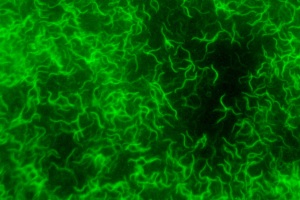Is swine dysentery creeping back?

Is swine dysentery creeping back as a problem? In the UK we had one major outbreak in the east of England involving 29 cases, which was rapidly contained and resolved. In the North of England again a new outbreak has been grumbling on for a number of years now and in the South there has been an outbreak of low pathogenic swine dysentery. In the US and Canada, where it had all but disappeared, there seems to be an epidemic going on also involving new strains. What is going on?
Swine dysentery, caused by Brachyspira hyodysenteriae, seemed to have gone through a relatively quiet patch and had almost disappeared in the US. Since the ban on growth promoters in the EU, which possibly had an inhibitory effect on some isolates, it appears to have increased, certainly in the UK.
The Eastern outbreak was rapidly controlled, as it involved mainly corporate farms and there was a good cooperation and improvement in biosecurity and transport cleaning, which got it under control. In Yorkshire it has affected mainly individual farms, and the control is difficult to coordinate, although several farmers are depopulating or doing partial depopulation and medication. Interestingly, using a new diagnostic technique, multi-locus sequence typing (MLST), they have shown that the outbreak was associated with two different strains, so the sources or reservoirs of infection were different, which is important when trying to control it on a regional basis.
In the South of England it seemed to be associated with a low pathogenic strain, with minimal clinical signs but positive pathological lesions in the colon (large intestine) identified at the slaughter house and the organism was subsequently cultured. Shared transport was thought to play a major role in its transmission. Even Scotland has put out a recent warning that they have had fresh outbreaks.
North America
In North America it was reported that there was an outbreak in N. Carolina and as the pigs were sent out of the state to finish, in places like Iowa, there have been major outbreaks of disease there. In Canada, Harding and others (2011) have reported on outbreaks of clinical disease in finishing sheds with B. hyodysenteriae but also with a potential new strain of Brachyspira sp. Sask30446. Looking at it phylogenetically using the nox1 gene it is more similar to the non-pathogenic strains, B. innocens and B. murdochii. It may well prove to be a new strain. There is a lot on new interest in Brachyspira spp, which has almost been left behind microbiologically but its whole genome has now been sequenced and further advances will be made both on its pathogenicity and hopefully diagnosis.
At the American Association of Swine Practitioners meeting in March there were two very interesting papers. One of the problems when dysentery occurs in split site systems is where did it come in. Is it just in the finishers or has it come up from the sow herd? For control/ eradication it is critical to know this. Duff and others (2012) surveyed sows and piglets and only found positives in 1.67% of samples in a chronically infected herd. In a separate study Schwartz and others (2012) looked at the survival of B. hyodysenteriae in lagoon water/slurry, which they use to gutter flush out the slurry pits in houses between batches. They found B. hyodysenteriae could survive for 14-21 days depending on pH and temperature in the lagoon water and sludge. Potentially this was an ideal method to recontaminate buildings and possibly infect new batches of pigs coming in.
Are you seeing more cases of swine dysentery in your country and what is your preferred method of control?











